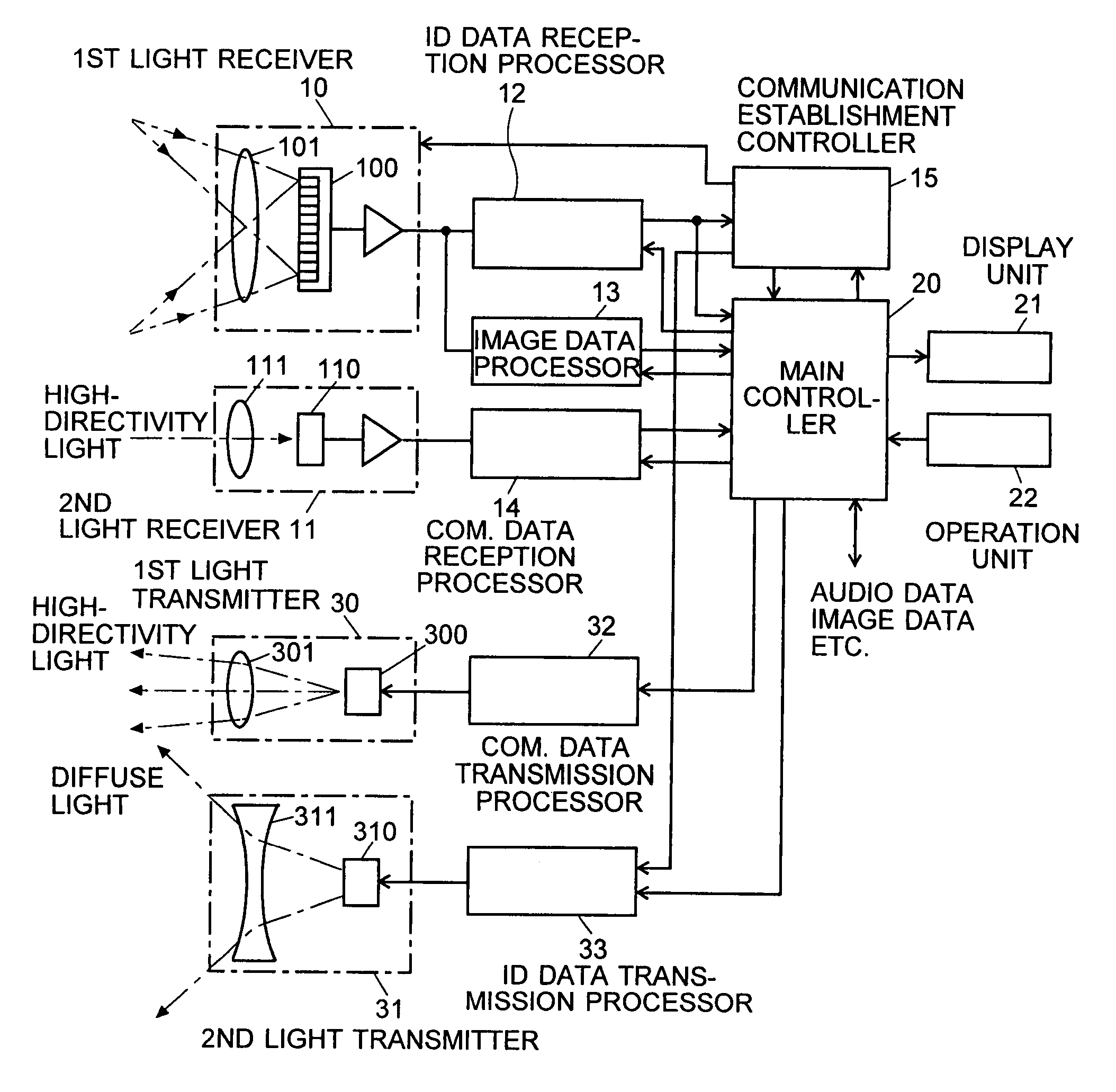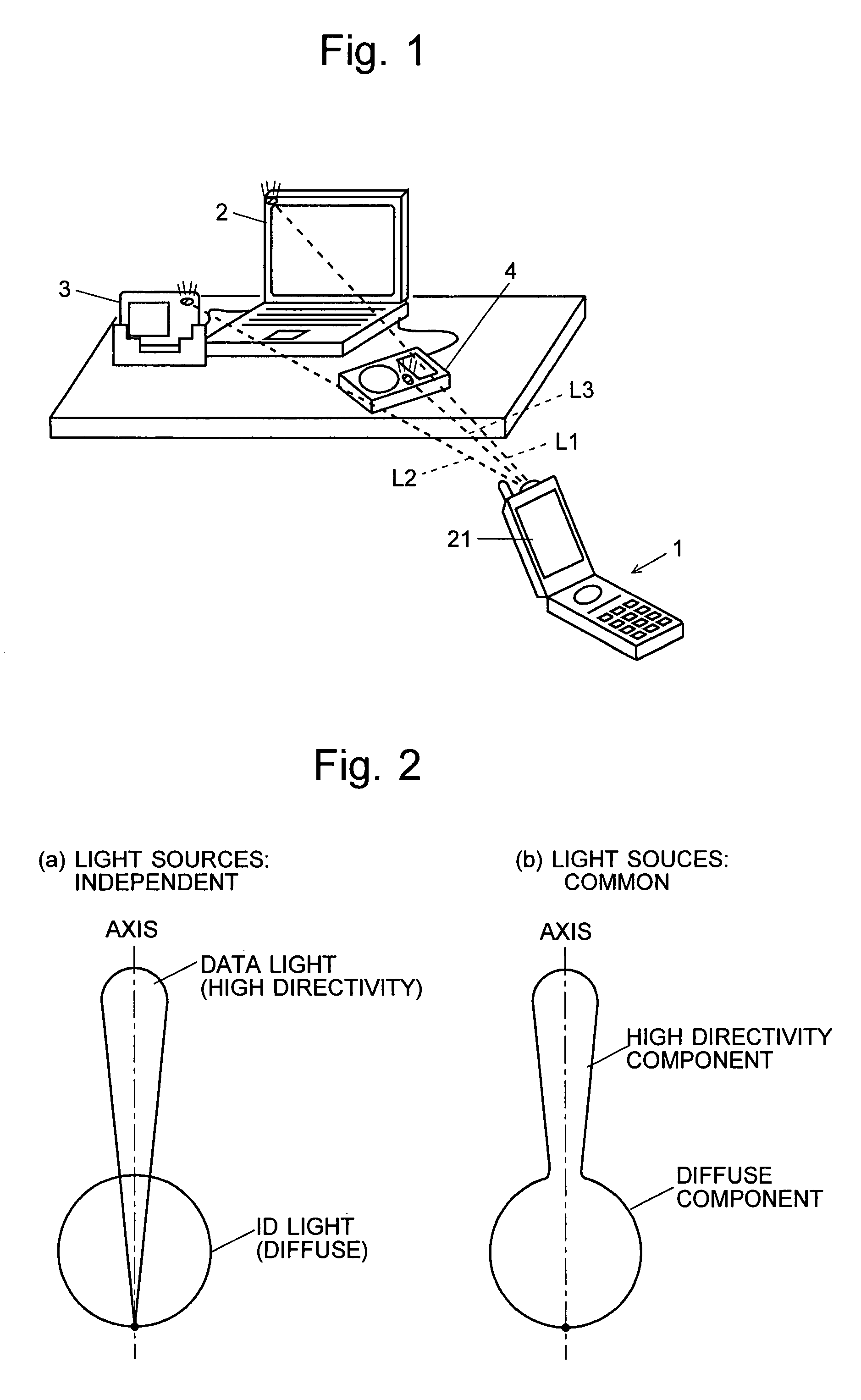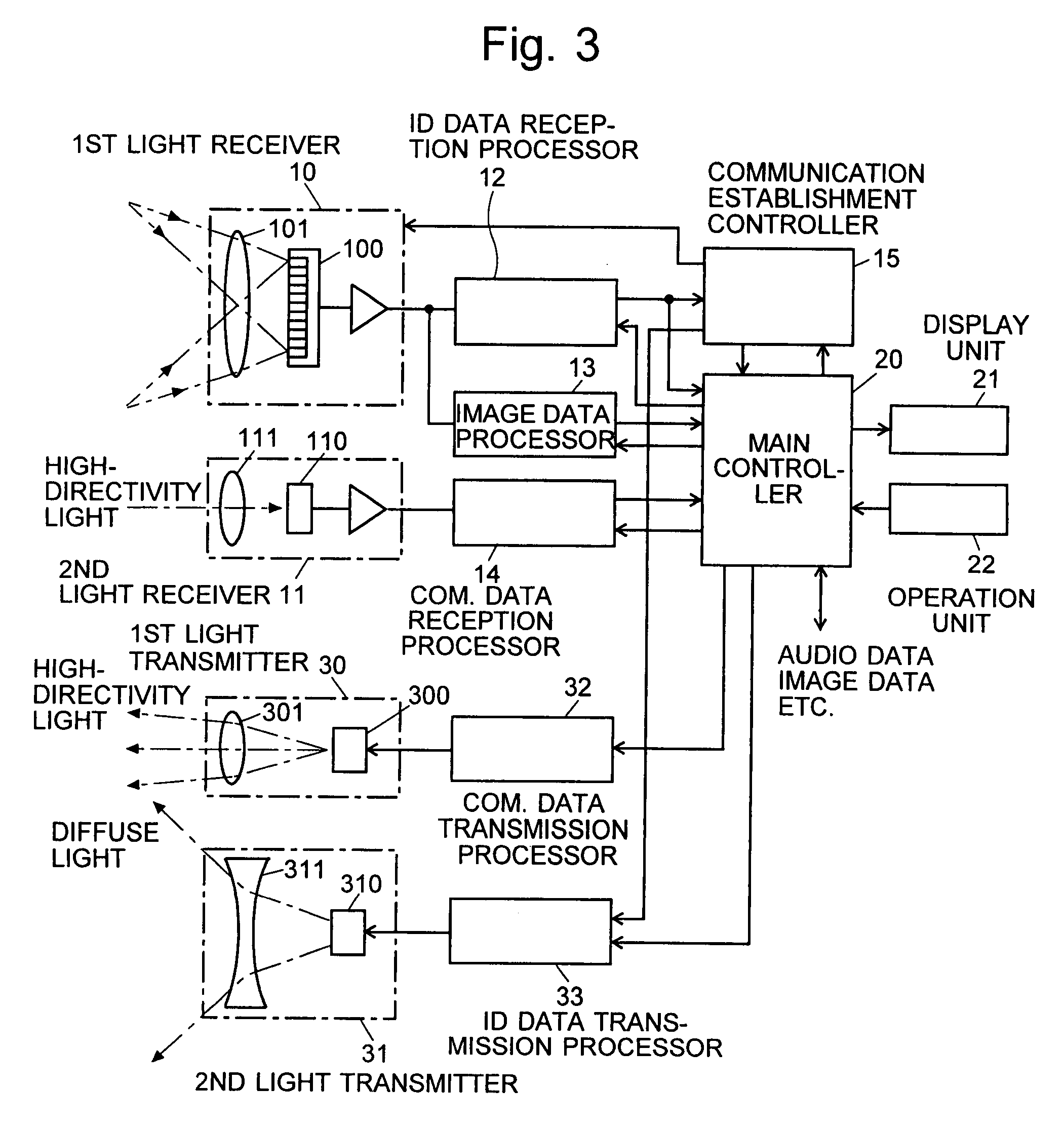Information-processing system using free-space optical communication and free-space optical communication system
a technology of optical communication and information processing system, applied in multiplex communication, wireless communication services, instruments, etc., can solve the problems of difficult constant maintenance of communication stability, difficult to operate the phone, difficult to adjust work, etc., to reduce the size of the range, reduce the power consumption of the imaging device, and quickly and assuredly select the pixels
- Summary
- Abstract
- Description
- Claims
- Application Information
AI Technical Summary
Benefits of technology
Problems solved by technology
Method used
Image
Examples
Embodiment Construction
[0069]An embodiment of the free-space optical communication system using an information-processing system according to the present invention is described in detail, with reference to the attached drawings.
[0070]FIG. 1 is an overall schematic diagram showing a mode of using the free-space optical communication system according to the present embodiment. In this example, the mobile phone 1, which is hand-held by an operator, corresponds to the information terminal of the present invention and is capable of free-space optical communication. The personal computer 2, the digital camera 3 and the portable music player 4, which are located relatively close to each other, are communication nodes capable of two-way communication with the mobile phone 1. The mobile phone 1, the personal computer 2, the digital camera 3 and the portable music player 4 each emit a beam of light containing an ID signal as information (this light called the “ID light” hereinafter). The above-listed devices also e...
PUM
 Login to View More
Login to View More Abstract
Description
Claims
Application Information
 Login to View More
Login to View More - R&D
- Intellectual Property
- Life Sciences
- Materials
- Tech Scout
- Unparalleled Data Quality
- Higher Quality Content
- 60% Fewer Hallucinations
Browse by: Latest US Patents, China's latest patents, Technical Efficacy Thesaurus, Application Domain, Technology Topic, Popular Technical Reports.
© 2025 PatSnap. All rights reserved.Legal|Privacy policy|Modern Slavery Act Transparency Statement|Sitemap|About US| Contact US: help@patsnap.com



